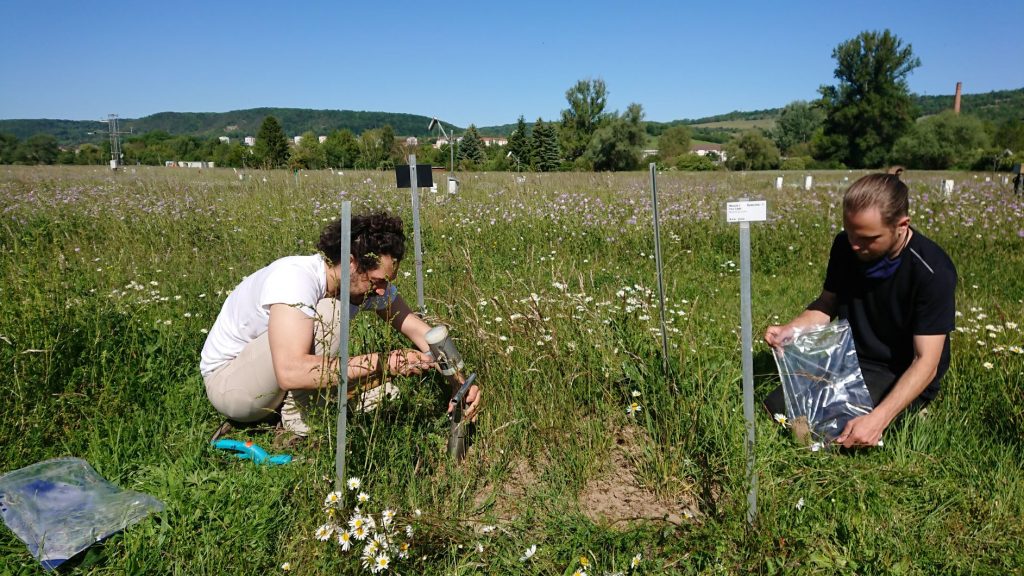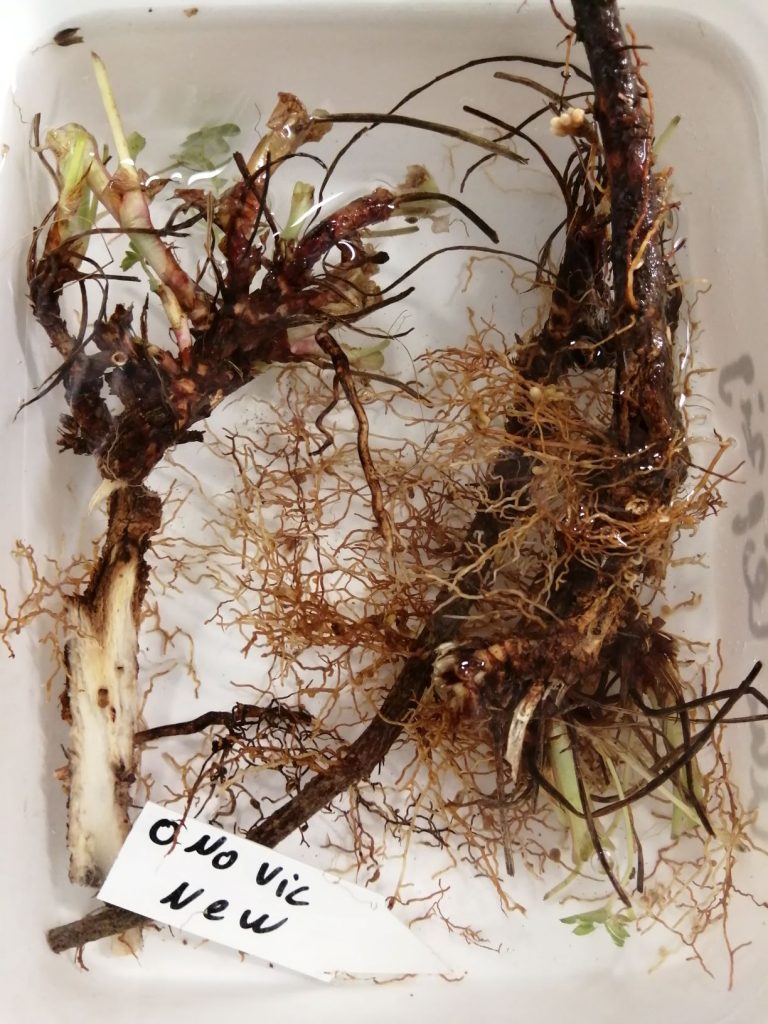Defense traits
Chemical and morphological traits as mediators of biotic interactions along plant diversity gradients
Principle Investigators: Prof. Dr. Alexandra Weigelt, Leipzig; Prof. Dr. Nicole van Dam, Jena/Leipzig

Leipzig
Principle Investigator
+49-341-97-38594

Jena/Leipzig
Principle Investigator
+49 341 9733165

Leipzig
PhD student

Biodiversity-ecosystem functioning (BEF) relationships often become stronger over time. The increasing performance at high plant diversity is thought to arise from the accumulation of plant growth facilitators, such as mycorrhizal fungi, biocontrol bacteria, and decomposers or, alternatively, through resource use complementarity. By contrast, in low-diversity communities, the rapid accumulation of belowground antagonists causes negative feedbacks and a decline in the functioning over time. If antagonists drive the BEF relationship, selection for more effective defense or tolerance mechanisms should be stronger in plants from low-diversity communities than in plants from high-diversity communities. The aim of this proposal is to evaluate the biodiversity effects that result from changes in biotic interactions, regardless of whether the effect is driven by herbivores or pathogens. Over time, plants experiencing largely differing selective pressures along a diversity gradient are likely to undergo selection filters of the original genetic variation. Plant traits determine plant individual performance in response to changing above- and belowground interactions. Thus, plants should change their morphological and chemical traits to adapt to different selection pressures along diversity gradients. These responses will be highly species-specific. In addition, changes on both the species and the community level will depend on the time available for antagonist or mutualist accumulation and should be strongest after long-term plant community-specific plant history and soil history and weakest without long-term plant history and soil history.

This subproject will (1) identify plant traits, especially root traits, potentially related to plant-antagonist interactions along a grassland plant diversity gradient and will determine (2) if and how these changes depend on the soil and plant history. We will examine a comprehensive set of morphological and chemical root and shoot traits representing different aspects of plant adaptive strategies, such as physical barriers (e.g. trichomes, tissue toughness, dry matter contents), palatability (lignin, tannins, proteins, soluble sugars) and toxicity using morphological and anatomical trait measurements combined with a screening of chemical compounds as well as comparative plant metabolomics. We hypothesize that investment in defense traits should be highest in long-term, low diversity plant communities and lowest in young and diverse plant mixtures. Our ultimate goal is to provide a mechanistic, trait-based explanation for the primarily negative feedback effects observed in BEF relationships.
